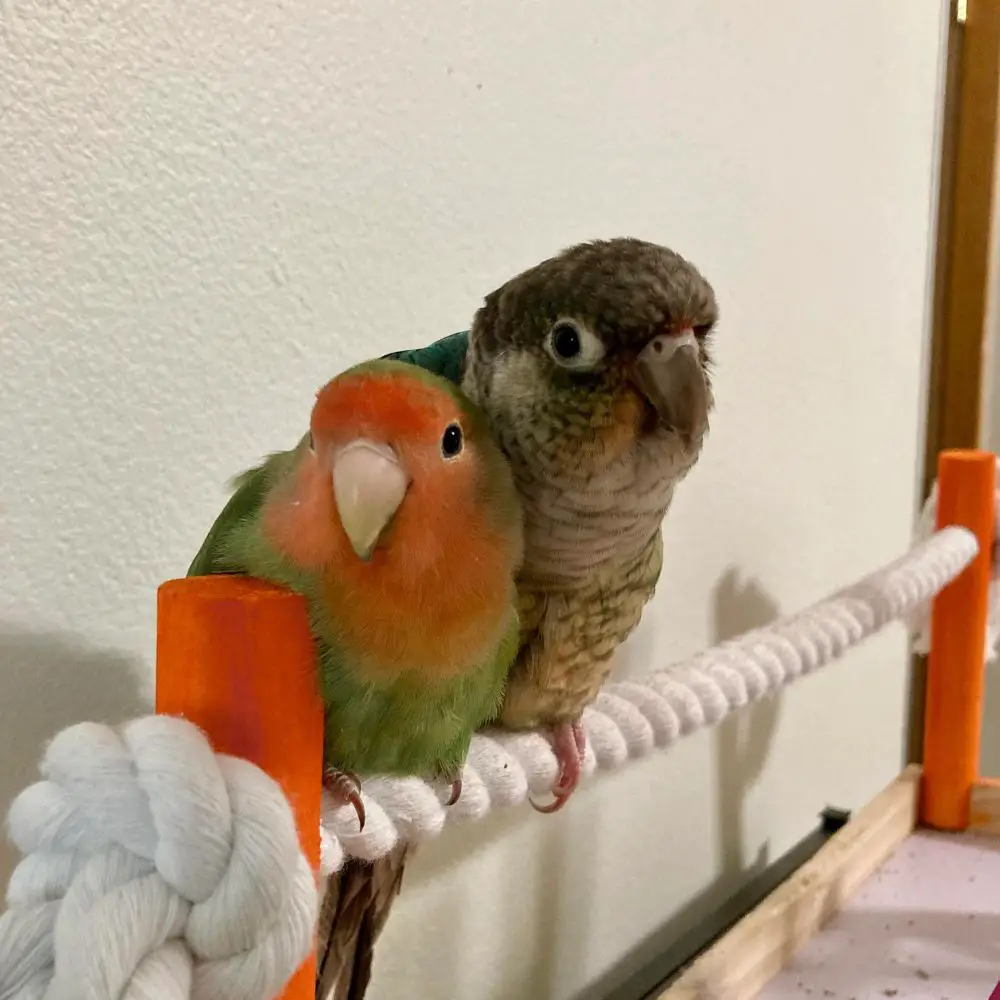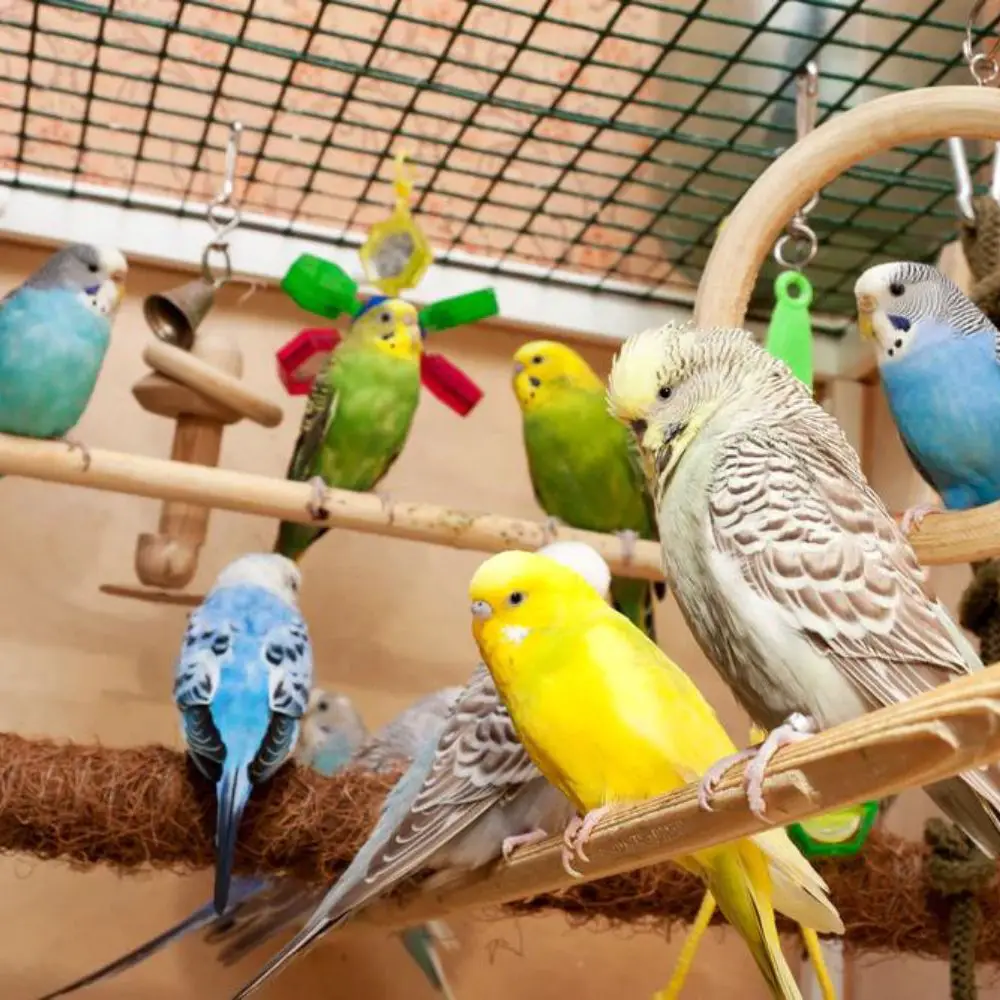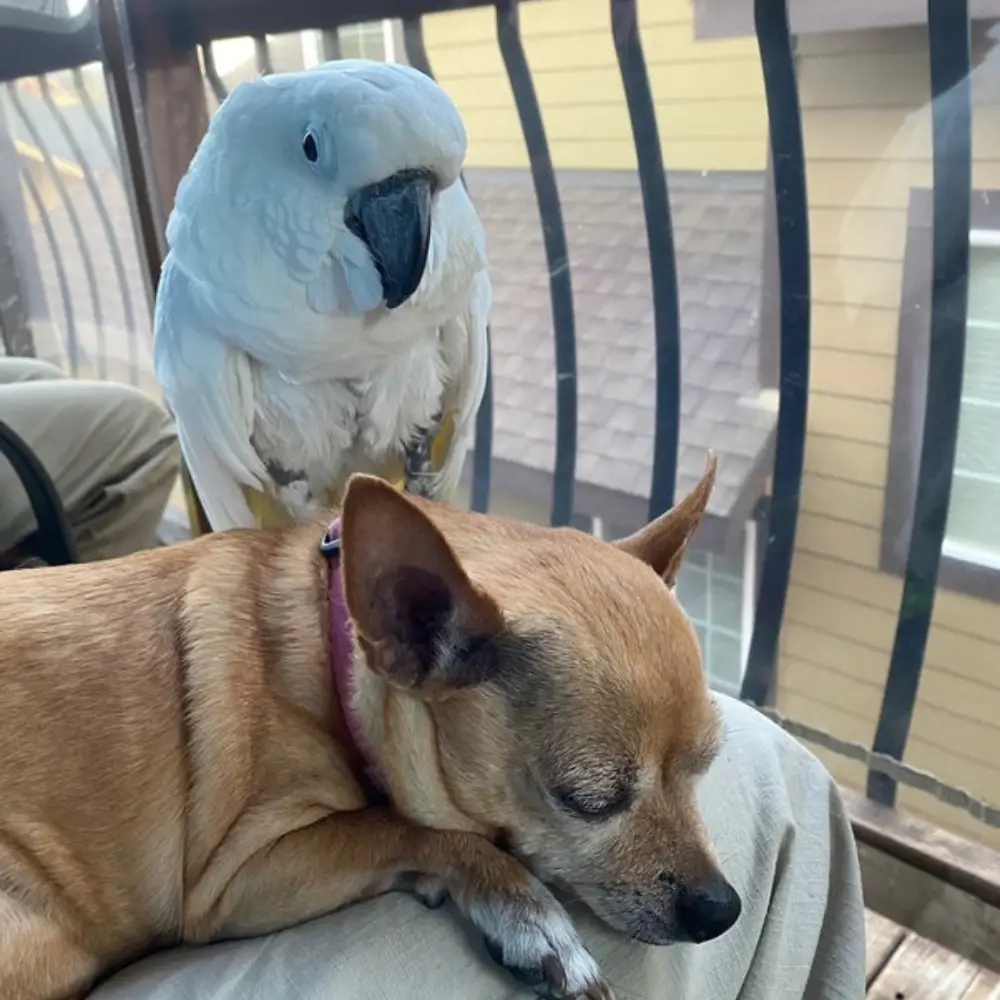
How to bond with my two budgies

The budgerigar is made to live with its peers, in pairs, but more often, in small groups of budgerigars. Cohabitation is possible and essential.
However, you don’t put budgerigars together randomly. It is necessary to respect a suitable and healthy environment, for the best possible cohabitation, because otherwise, the risk of incidents and violent disputes is possible in the event of excessive promiscuity.
- A spacious living space in length and width (a wide cage of at least 70 lx 40 l x 50 h for a couple) so that several wing beats are possible on either side of the cage or aviary.
- Daily outings of several hours for restricted living spaces such as simple cages (size listed on the point before). Parakeets in an aviary will suffer less from this need for outings, which are essential for parakeets in cages. A 60 x 60 x 60 aviary such as exists is considered a cage. Per aviary, minimum 1 put on 1 put from length to width.
- Several drinkers, and especially several feeders, to avoid conflicts during meals.
- Balance the number of females to the number of males. you need as many males as females or more males, but never more females.
- During the breeding season, it is essential to isolate the breeding pair. Reproduction increases their instincts of territoriality, violence towards other conspecifics, and aggressiveness. You should not breed in an aviary with the entire colony present. This runs the risk of violent, deadly pecks.
- Toys and play accessories to relieve hormonal surges, tensions, or simply excitement. Also consider good light, rich in UVA and UVB.
- Respect quarantines and acclimatizations.
Can a parrot live with another parrot?
The budgerigar is one of the so-called “ monospecific ” parrot species. That is to say, they live in large groups of individuals of the same species, without cohabiting or mixing with others. intruders are chased away, injured, and persecuted. We cannot therefore envisage such cohabitation.
The budgerigar is gregarious, playful, and energetic with its peers. If it cohabits with other species, its territorial instincts are already very strong but are reinforced by the cohabitation situation. moreover, if the parakeet is with several conspecifics, they risk forming a dangerous solidarity between them in the event of conflicts.
They can quickly attack an individual of another species with beaks and claws until they kill it. This is for a simple basic conflict (during a meal at the feeders, during an argument on a perch, or just an individual who had the misfortune of being too close to her).
Unfortunately, accidents involving serious injuries and deaths caused by waves during poor cohabitation are very common. Above all, you should not put budgerigars with species with a strong character, territorial, playful, curious, or invasive. Any cohabitation with other species is excluded, under penalty of serious or fatal injury (All species of lovebirds, cockatiels, conures, kakarikis, amazons…

Certain cohabitations between Budgerigars and other species such as the Cockatiels or other equally calm species work occasionally, however, a spacious environment rich in occupations is required.
Large aviaries of several square meters or rooms dedicated to parrots will allow cohabitation if gradual integration is Any cohabitation with exotic species or straight beaks will be all the more dangerous, devastating, and deadly, and therefore impossible.
I 100% advise against it. Budgerigars are ruthless with exotics, a single peck is fatal to them. the simple fact of wanting to play with an exotic will lead to its death, due to the size and playing strength of the parakeet. Any cohabitation with such exotic and hooked species will result in certain death in the event of an exchange (with a simple peck).
One exception is known: cohabitation with Chinese quails. These parrots live on the ground only, and the budgerigars perch highly, it is a case of cohabitation that is seen among breeders.
However, I warn: Chinese quails need a large space for running and walking on the ground, and a whole range of accessories for their quality of life, so this is possible in a large aviary (200 cm L on 200cm l minimum).
Also remember that droppings will fall, so for the optimal quality of life of the quails this is not adequate and above all pray that no wavy ones go to the ground one of these days. This is a practiced cohabitation that I still advise against, as a precaution. To be practiced by expert breeders.
However, we will be able, by chance and especially by factors that you cannot control, to hear about successful cohabitation without any accidents. You will hear about budgerigars living alongside colloids, or other very calm, non-territorial, and minimally invasive species.
This is the occasional success of these cohabitations. This is because the species is very calm and non-territorial, and under the condition that it allows itself to be bullied by the whims and territorial and tense behaviors of the budgerigar.
The latter will be the first to hurt the other species in case of conflict. This can, one day, by accident, because the two species were too close, quickly degenerate.
These fortuitous cohabitations therefore succeed thanks to the exceptional behaviors of the parrot (necessary calm and passivity) and environmental factors, as well as the history of each bird.
If the rules previously mentioned (for cohabitation between budgerigars) are respected (large space, no breeding in colonies, toys, etc.) and the species have grown up together, they have therefore learned to tolerate each other and learn from one another.
On the other to finally form a duo or a group. Consider the exceptional nature of these successful cohabitations thanks to essential cumulative factors that you cannot control:
- Particular characteristics of each individual (calm, passive, non-territorial are desired and favorable behaviors)
- Adequate environment (very large space essential, food in several separate places, multitudes of toys and perches, few individuals, no reproduction, etc.)
- History of common life, from a very young age, often having grown up together
- Species together are classified in the “multispecific” category
SOURCE: African Grey Parrot Pet
How many parrots can live?

Do Parrots Get Along With Other Pets?

Any cohabitation of a budgerigar, or another species of parakeet (parakeet, parrot), as well as exotic birds, with other pets such as a dog, a cat, a ferret, a rat, etc., is DANGEROUS AND DEADLY. There is a predator-prey relationship in this cohabitation which will be an imminent and fatal danger for the parakeet.
Possible exchanges must be avoided at all costs, the birds having to live in a room other than the other pet, a secure room that locks. You must at all costs avoid having your cage in the room where the cat or dog lives, and with a swipe of its paw, it could drop the cage, and even without opening it it could kill the parakeets, with stress or claws.
SOURCE: African Grey Parrot Pet




















